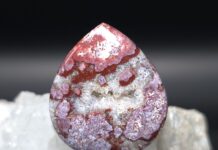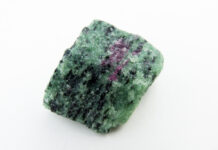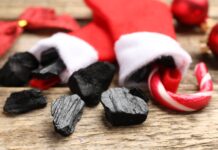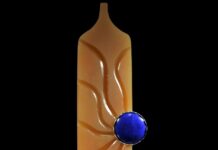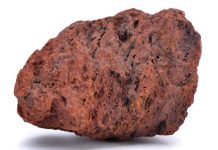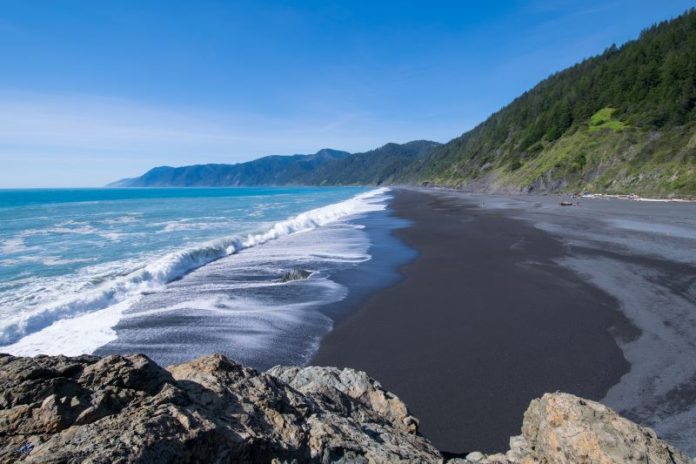
Mineral beaches, from California’s black magnetite sand to Japan’s sea glass coast, offer a unique glimpse into Earth’s geology and human history.
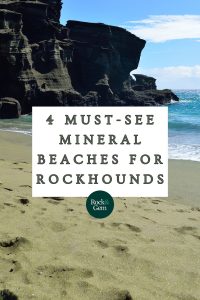
Where to Find Unique Mineral Beaches Around the World
Beaches are fun vacation spots, but they also offer more than scenic views; they’re prime locations for rockhounding experiences and sand collecting opportunities. Here are four beaches that each offer a different experience, highlighting the natural beauty and mineral diversity found along the world’s shorelines.
🌟 Mineral Beaches Fun Facts: Did You Know?
|
Garnet at Sand Point Beach, Michigan – A Mineral Beach Favorite
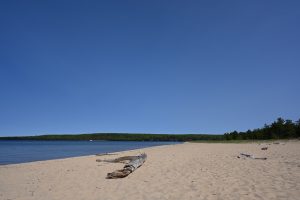
Located on the Pictured Rocks National Lakeshore of Lake Superior in the Upper Peninsula of Michigan near Munising, Sand Point Beach’s distinctive reddish-purple sand contains a high concentration of the garnet minerals pyrope and almandine. The garnet sand is caused by erosion and weathering of nearby garnet and schist rocks that are rich in garnet minerals. Garnet is a semi-precious gemstone known for its deep red color, although it can also occur in other hues such as orange, yellow, green, and purple.
Magnetite-Rich Sands at Ocean Beach, California
Ocean Beach, in San Diego, California, is renowned for its black sand, which is mainly composed of magnetite. This is a naturally occurring iron oxide mineral that has magnetic properties. The black sand is prominent in certain parts of the beach, especially along the shoreline. Visitors can be seen collecting magnetite particles using magnets.
Responsible Rockhounding at Mineral BeachesBefore collecting at any mineral beach, make sure to:
|
Green Sand and Olivine at Hawaii’s Papakolea Beach
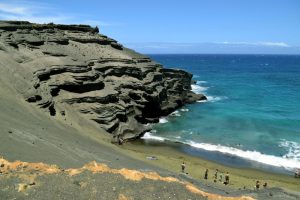
Along the rugged coastline of Hawaii’s Big Island, Papakolea Beach is famed for its distinctive green sands caused because of the presence of olivine crystals (Peridot is the gem variety of olivine). Most olivine is the mineral forsterite, which makes up about 50 percent of the Hawaiian basaltic rocks. It weathers out from the surrounding volcanic formations and accumulates on the beach. Its green color is thought to be a result of traces of nickel, while red olivine comes from the oxidation of iron within the structure.
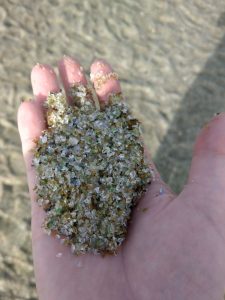
Sea Glass Treasures at Japan’s Omura City Mineral Beach
Collecting sea glass has become a popular activity worldwide, but for visitors to the Omura City Beach located in Omura City, Nagasaki Prefecture, Japan, they can see a whole beach made up of sea glass. This beach was created in 2016 from recycled glass to help restore the environment of the bay and to grow clams, which help to improve water quality. The most common colors of sea glass found on Omura City Beach include green, brown and clear, although occasionally, blue or red can also be found. It’s best to visit after high tides or storms when new sea glass is brought to the surface.
Mineral Beaches: Conclusion
Mineral beaches blend scenic landscapes and a chance to explore Earth’s natural processes through sand and stone. Whether it’s garnet, magnetite, olivine, or sea glass, each tells a story of time, pressure, erosion and even human influence. For rockhounds and curious travelers alike, these mineral-rich shores are unforgettable destinations worth exploring.
This story about mineral beaches previously appeared in Rock & Gem magazine. Click here to subscribe. Story by Pam Freeman and Dr. Stuart Mills.


